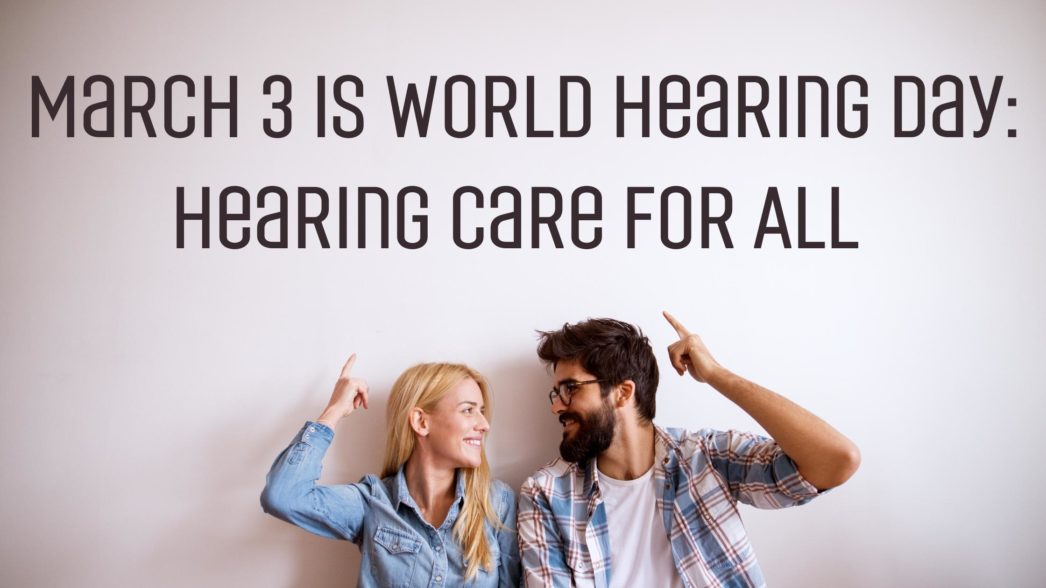World Hearing Day is here, and the World Health Organization (WHO) is launching its World Report on Hearing to alert governments and individuals alike to the hearing needs of people all around the world. With an emphasis on screening, rehabilitation, and communication, the WHO suggests that policymakers would be wise to “integrate person-centered ear and hearing care” into universal health care coverage in national health plans. They further suggest that modest economic investments in programs to promote hearing health can boost national economic output and prevent more costly consequences of leaving the world’s current hearing healthcare needs untreated.
The WHO also suggests that all of us can work to better our understanding of good hearing healthcare to keep ourselves fit and independent in the long term. Hearing loss from noise and diseases of the ear requires some attention to mitigate, but it is within all of our power to do so.
With World Hearing Day as a call to action to understand and grapple with the causes of global hearing healthcare needs, let’s celebrate by taking a look at some of the things we can do to promote our better hearing health. The benefits of hearing health extend beyond our individual health and well-being to the people around us and our larger communities, so listen up!
Regular Hearing Tests
The first step to good hearing health is a regular hearing test. Because of the way hearing works, we usually don’t recognize hearing loss in ourselves until it has reached a degree that impacts our day-to-day lives. By getting regular hearing tests, we can find out if we have some hearing loss before it ever causes a problem, and work with our hearing healthcare professionals to try to prevent further hearing loss.
The Better Hearing Institute, a non-profit organization, recommends getting a hearing test once every decade until age 50 and once every three years after that. While this schedule is sufficient for most people, if an unusual amount of hearing loss is detected it would be advised to test more frequently. Those in high-risk professions or with a medical history that would suggest a higher risk should also get more regular hearing tests.
Lower Volumes Still Pose a Risk
While we might imagine that only painful sound levels cause hearing loss, the truth is unfortunately less convenient than that. Even 85 dBA (about the sound level of a lawnmower) will cause hearing loss after about 8 hours of continuous exposure. With every 3 dBA of additional volume, the safe time of exposure is cut in half. That means by the time sound reaches 100 dBA (the sound level of an average high school dance), it only takes a few moments to cause permanent hearing loss.
If you’re unsure of the safety of the sound levels in your environment, you can download a smartphone app to measure them. Usually called an “SPL meter” (sound pressure level meter), these apps will give you a measurement of transient SPL (the sound level at any given moment) and an average. If the average, after 30 seconds or so, is at or above 85 dBA, you should protect your ears or move away from the sound source.
Earplugs
Earplugs are an easy and effective way to protect yourself against unsafe sound levels. Why not carry a pair with you when you go out? It might sound like a hassle, but a set of disposable earplugs costs about $1.00 and fits into the tiny pocket in a pair of jeans. With a set of earplugs at the ready, you can protect your ears no matter where you find yourself!
For those who expect to encounter louder sounds more often, a set of reusable earplugs can be a good investment. These will have a better sound quality than disposables, attenuating frequencies more evenly across the spectrum, and cost about $15–30 for a set.
For musicians, music enthusiasts, hunters, motorcyclists, and anyone else who encounters unsafe sound levels on a frequent basis, custom-molded earplugs are the best solution. Your hearing healthcare professional will take a mold of your ear canal and produce a set of silicone earplugs that comfortably seal your ears from outside sound. You can choose from a variety of attenuators that range from a minimal to an extreme degree of attenuation, depending on your intended activity. They offer the safest protection and the best sound quality of any option.
Get a Hearing Test!
Celebrate World Hearing Day by making an appointment right now for a hearing test! Frequent testing is the best thing you can do to keep good track of your hearing health, make sure that your hearing protection is effective, and keep your ears in good shape for the long haul. If you do have a degree of hearing loss that affects your day-to-day, hearing aids are an excellent solution that will keep you feeling strong and independent. Don’t delay, check your hearing today!


